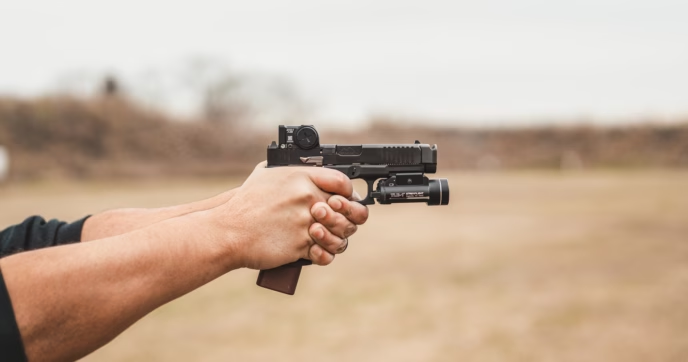Making the change from iron sights to a red dot can be a challenging endeavor. No one likes getting worse at something, and in the liminal period between the two, your marksmanship will inevitably suffer. But, the challenge is worth undertaking.
There is a reason red dots have become the de facto standard for long guns and are rapidly taking over the handgun market: they are simply better than iron sights in nearly every way. Your performance may take a dip while you are learning the ropes, but it’s nothing compared to the gains in speed and accuracy that you’ll see once you’re acclimated.

The Benefits of Red Dot Optics for Pistols
Red dots come with a whole host of advantages over iron sights, which is why they are so rapidly becoming popular.
Chief among them are speed and simplicity, which go hand in hand. With a red dot sight, there are no posts to align or dots to stack. You simply put the reticle on the target and fire. This cuts the number of variables involved in a shot from three (the rear sight, the front sight, and the target itself) to two—the dot and the target. This means less time spent acquiring a sight picture and less opportunity for error or misalignment, leading to a faster, more accurate shot.
Red dots also have the benefit of being a target-focused sighting system. With iron sights, a proper sight picture requires the user to focus on the front sight for maximum precision. This requires the user to take their focus away from the target, a process that is both counter-intuitive and potentially dangerous if the target is a threat. Proper use of a red dot requires focus on the target itself.
The inherent glow of a red dot is yet another benefit. The artificial light of the dot provides a bright, eye-drawing, high-contrast aiming point in nearly all environments. Fiber optic sights have long been popular because they offer much of this same benefit, but red dots take it a step further by providing their own source of light rather than magnifying ambient light, meaning they stay bright and high-contrast even in completely dark environs.
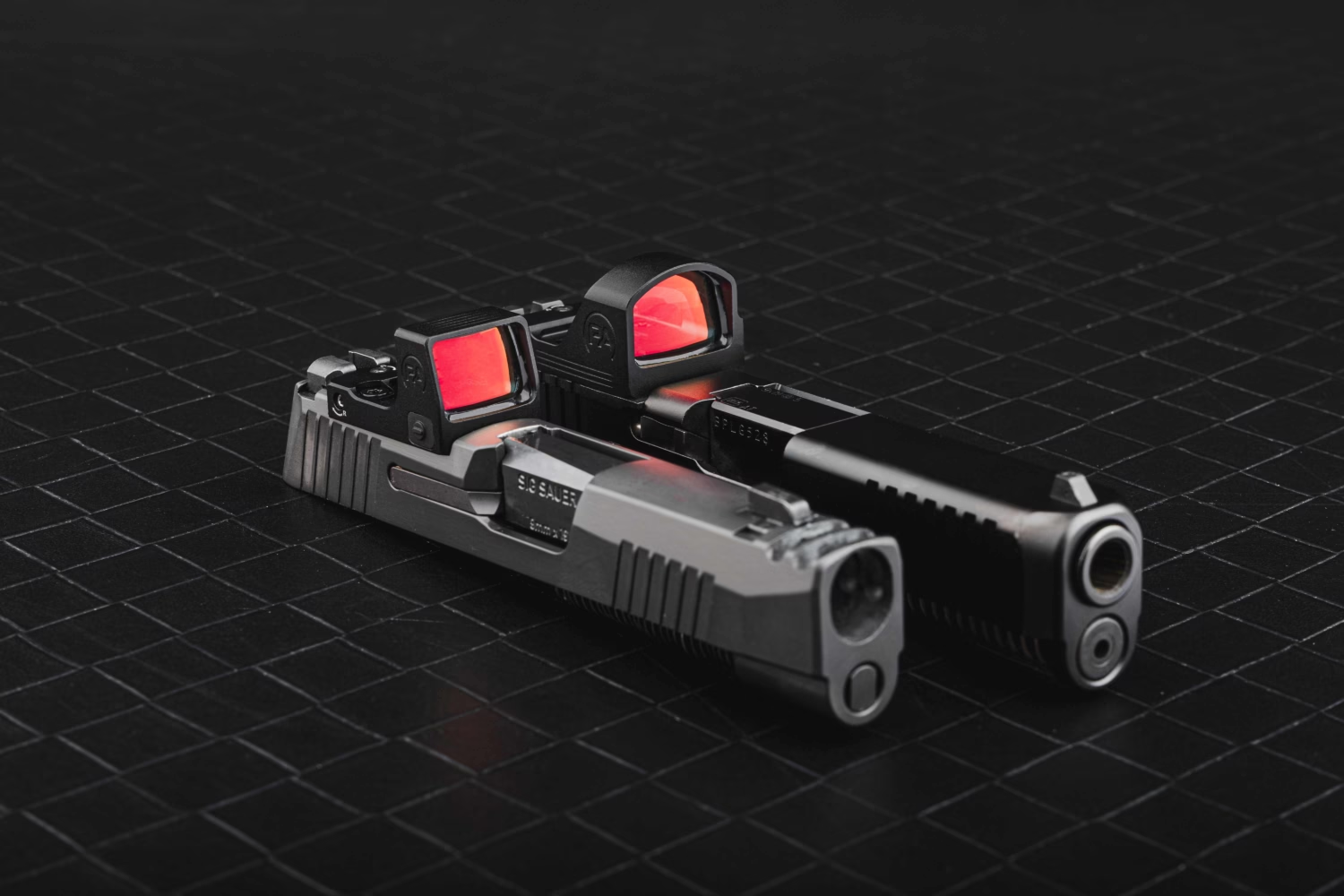
Adding A Red Dot To Your Pistol
Arguably the most significant impediment to converting over to red dot use is the process of actually adding a dot to your pistol. Even if your slide is already machined for a dot, it’s a significant expense—although that can be minimized by opting for an affordable but high-performing dot like a Primary Arms® mini reflex sight.
If your slide isn’t already cut for a red dot, you’ll need to either acquire a new optic-ready handgun or have a gunsmith mill your slide for your desired dot. There are a number of qualified companies that offer this service, but bear in mind that this sort of custom work will usually void your warranty.
Even if your slide is optic-ready from the factory, you may still need some additional parts in order to mount a red dot. While some optic-ready pistols are cut for a specific optic footprint, many use a system of red dot adapter plates to allow compatibility with a range of optics. Glock’s MOS system is perhaps the best-known version of this.
With these systems, you’ll also need an adapter plate for your specific dot. The plate is then bolted to your pistol’s slide, and the optic to the plate. Once your dot is installed, it will need to be zeroed just like a rifle optic. We cover the process in-depth in our article on how to sight in a red dot, so we won’t rehash it all here, but the process should feel very familiar to anyone used to working with rifle optics; simply fire a few rounds and then adjust the windage and elevation until the point of impact matches your point of aim.
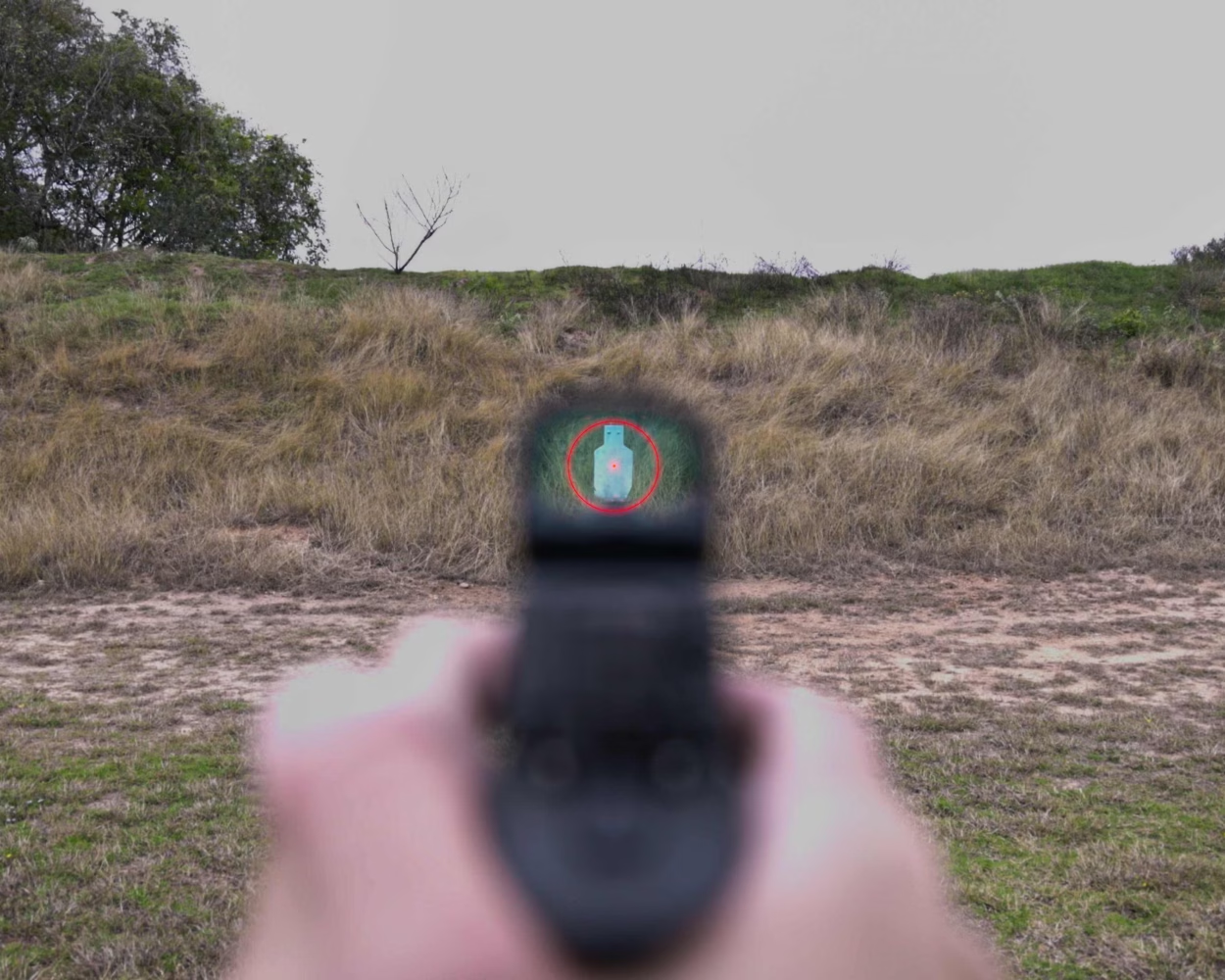
Training For The Dot
With a red dot installed and zeroed on your pistol, it’s time to start the retraining process. Aiming with a red dot is not all that different from using iron sights, but there are a few things that will take time to get used to.
Typically, the thing new red dot users struggle with the most is finding the dot inside the optic window when bringing up their pistol or drawing from a holster. If your pistol is not correctly aligned with the target, the red dot may not be centered in the optic window, or may not be visible in the window at all.
With iron sights, this is only a very minor issue and requires no real training to fix. It’s immediately evident exactly how the sights are misaligned, and often we correct that misalignment without even thinking about it. With a red dot, though, it can be difficult to tell how you are misaligned if the dot is not in the window. Are you off to the left, or the right? Too high, or too low?
This often leads to new users waving the firearm about slightly in an effort to find the dot, which can slow you down considerably on your first shot. With a stiffly recoiling firearm, you may find that this process repeats after firing, as the recoil causes the gun to kick up, making the dot disappear again.
With practice, though, it’s relatively easy to train yourself to present your firearm properly aligned with your eye, or at least close enough to it that the dot is visible in the window and easy to center. It’s simply a matter of practice and is a good skill to develop regardless of your choice of sights. Presenting your firearm already aligned with your eye will shave a few fractions of a second off the time it takes you to aim at the target, even if you are already correcting your irons without realizing it.
New users may also need practice to become used to focusing on the target rather than their front sight, or in the case of a reflex sight, the dot itself. This tends to be an easy skill to learn, though, because focusing on the target you are engaging tends to be most user’s default. Typically, the only people who will need to put any significant effort into learning to focus on the target are those who spent many years learning to focus on their front sight.
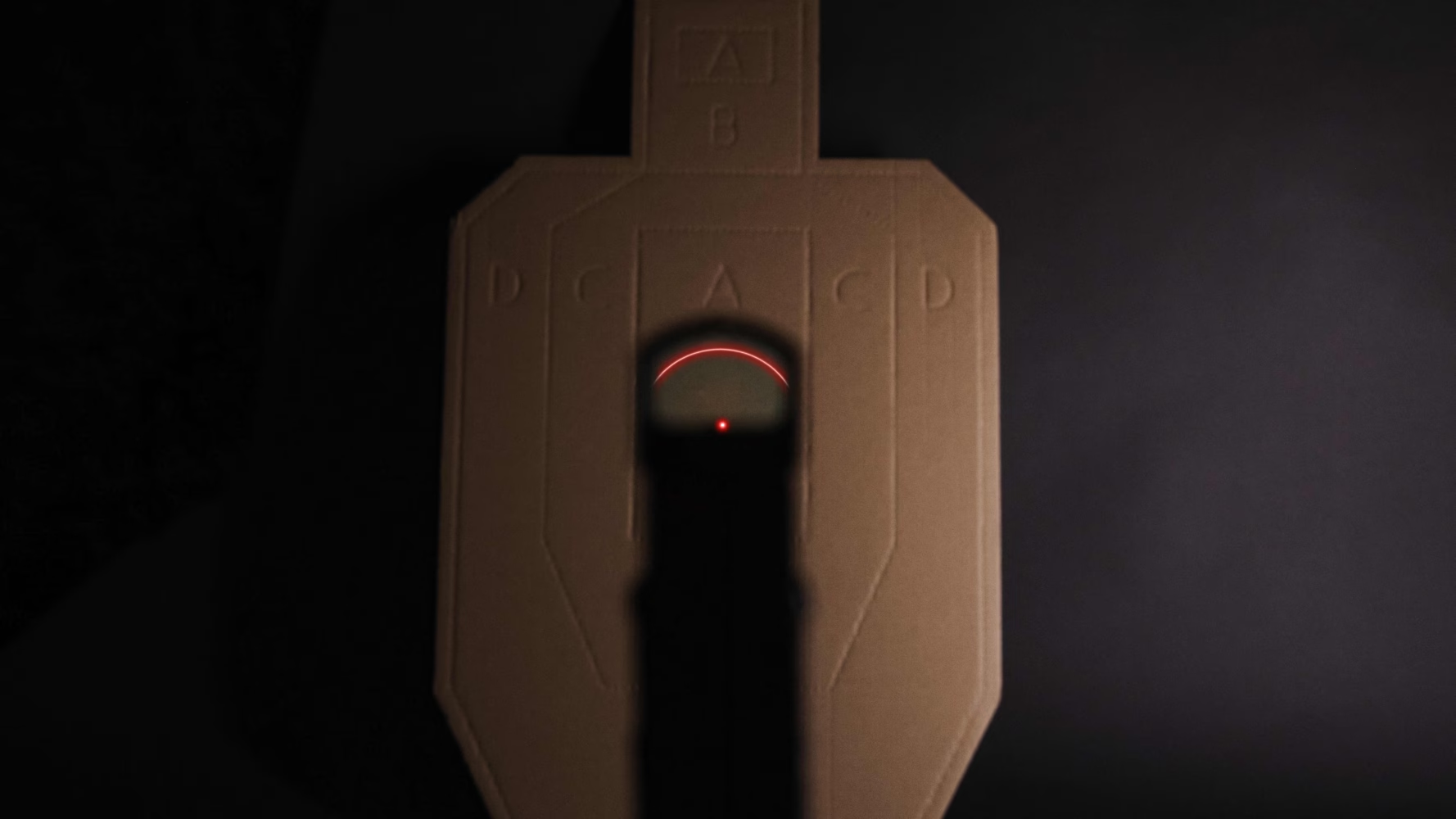
ACSS® Vulcan® System
One handy tool to aid in this training process is the ACSS Vulcan system. These reticles, available in either a chevron or dot aiming point configuration, augment the simple aiming point of your reflex sight with a massive 250 MOA circle. When your optic is properly aligned with your eye, this circle is outside the viewing window and doesn’t encumber your view of the target.
When misaligned, though, part of the circle will become visible. The curvature of the visible portion of the circle will instantly indicate in which way your pistol is misaligned, allowing for a much more rapid correction than would be possible without it.
This makes the Vulcan reticle an invaluable training aid for those new to pistol red dot sights. The instant feedback it provides helps users learn proper alignment more quickly, and even before you are fully trained and able to easily present your pistol properly aligned with your eye, makes the process of finding the dot much quicker.
Beyond its utility as a training implement, though, the Vulcan reticle also offers immense value for high-stress situations, or for engaging targets from unconventional positions. The rapid feedback it offers is similar to that of iron sights—as soon as you pull up your pistol, you can see how you need to correct and do so almost without thinking about it. This is a huge boon when trying to engage a target from under a low barricade or with your offhand, or in any situation in which muscle memory is unable to instantly align your pistol.
ACSS Vulcan reticles are available in select Primary Arms and Holosun red dots, including both open and enclosed emitter designs. If you’re unclear on the distinction, we recommend our article on open vs closed emitter red dots.
Open emitter designs such as the Primary Arms GLx® RS-15 offer an affordable yet feature-rich way to enter into the pistol red dot world. The RS-15 utilizes a popular C-More mounting footprint and comes with an included Glock MOS adapter plate. It’s also equipped with AutoLive motion-sensing technology, a top-loading battery tray, and multicoated lens.
The Primary Arms PLx® HTx-1 is also available with an ACSS Vulcan reticle, but this exceptional optic utilizes an enclosed emitter design to maximize durability. The innovative Modular Chassis System allows for compatibility with nearly all optic cuts and situates the optic so low against the slide that most standard-height iron sights will offer a cowitness. It’s also loaded with features, and made in the USA.
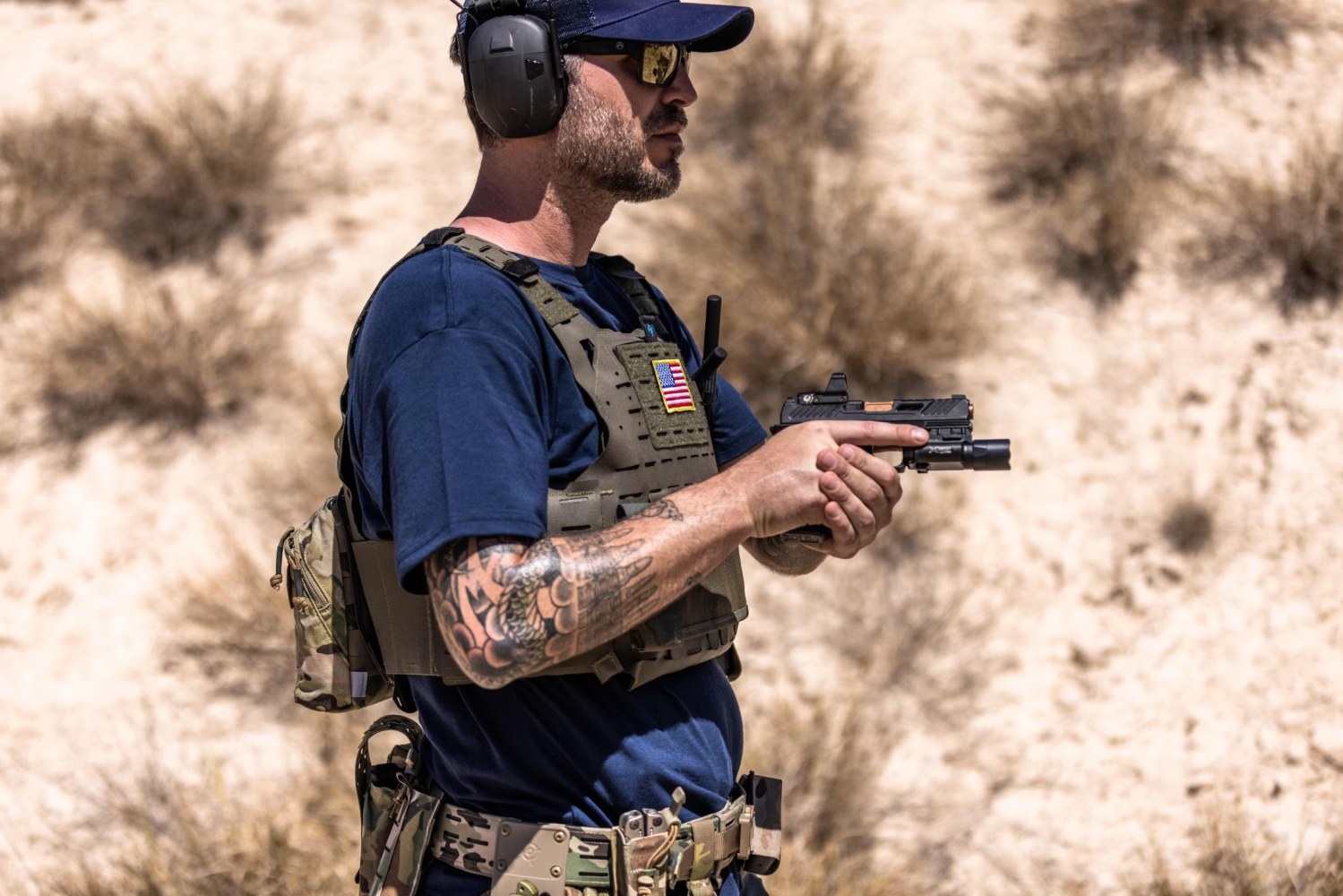
Conclusion
Pistol reflex sights offer much the same benefit for handgun marksmanship as rifle sights have for their respective firearms for decades. The fast, eye-drawing glowing dot and target-focused approach make it a superior aiming method for nearly all applications, whether defense, competition, or simple target practice.
With a little training (and possibly some help from a Vulcan reticle) you too can make the jump from old-school irons to modern optics, shaving seconds off your times and inches off your groups.

